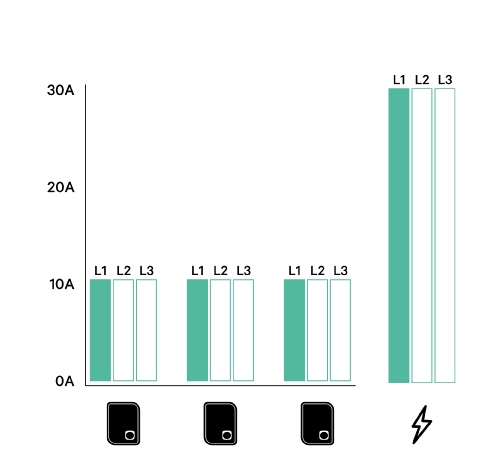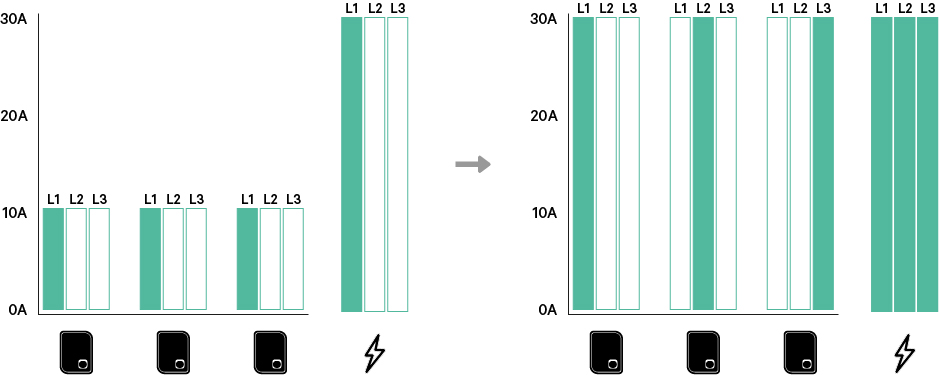Phase rotation is a common practice carried out by installers in electrical installations where the installer alters the order in which the loads are connected to the phases so the 1-phase loads are distributed evenly.
This can be especially beneficial in some electrical setups as it ensures we don’t overload some phases if others have plenty of available energy.
How does Phase rotation work?
In EV charging, some EVs can only charge on 1-Phase, since their On-Board-Charger (OBC) is limited. In these cases, even though an EV charger is compatible and installed on a 3-phase, the EV will only charge on a single-phase.
3-phase charging is faster than 1-phase (at the same current), but in some cases, single-phase charging can be enough to charge vehicles over a long period. For example, condominiums have important challenges in distributing electric power cables throughout their parking lot. Creating single-phase circuits is a simple way to keep costs down while installing multiple charging points. It is also well dimensioned for the customers’ needs since overnight charging gives plenty of time to “fill up” the battery and is still the cheapest way to charge electric vehicles.
But when it comes to supermarkets or gas stations, EV drivers need to recover as much battery percentage as possible in a minimum time. This is where phase rotation comes into play.
Let’s say you have three charging points in the same load management network installed in a 3-phase facility. Suppose all of these charging points are being used to charge single-phase vehicles. If all three chargers are installed in the same order (Phase1 – Phase2 – Phase3), it would mean that there is potentially a total load of 30A on L1 – as the whole load is limited to the grid single-phase capacity – while L2 and L3 are completely unused (Figure 1). Furthermore, each charger only charges at 10A since the maximum available power on each phase is 30A, and they have to share the available power between the load management network.
In this scenario, the EV installation is not balanced, and available power is wasted. To counter this and achieve full-speed charging, we want to balance the current over the three phases.

This is where phase rotation can be used. If the EV chargers are installed with a modified phase order, single-phase charging sessions are distributed between phases resulting in a balanced load and maximising the charging speed of each single-phase charge. (Figure 2).

To go further
If you are interested in optimising the energetic performances of your charging infrastructure, or if you intend to expand your current network, you should also consider Static Load Management or Dynamic Static Load Management.
If you need more information on designing a multi-charger installation or have questions about Phase rotation, you can contact us via our contact form and our experts will advise you on the best available solutions.